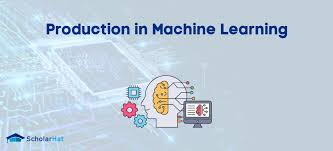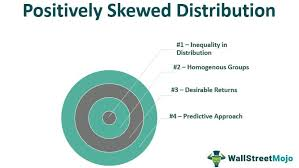comprehensive guide to Data Skew and Drift in Machine Learning: Causes, Detection, and Prevention 2024
Introduction
Machine learning models are not static—they evolve with time. However, one of the biggest challenges in production ML is dealing with data skew and drift, which can lead to model performance degradation.
🚀 Why does model performance degrade over time?
✔ The training data differs from real-world data (Data Drift).
✔ The relationship between features and labels changes (Concept Drift).
✔ Feature processing is inconsistent in training vs. production (Schema Skew).
This guide covers:
✅ What are data skew and drift?
✅ Types of skews: Schema skew, Distribution skew, and Training-Serving skew
✅ How to detect and prevent model decay
1. Why is Production ML Different?

In Kaggle competitions, datasets are static—the training and test sets are predefined. However, in real-world production ML, data constantly evolves due to:
✔ Changing customer behavior
✔ New trends and patterns
✔ System changes and upgrades
🚀 Example:
A fraud detection model trained in 2020 may fail in 2024 because fraud tactics evolve.
2. What is Data Drift?

Data drift happens when the distribution of real-world (serving) data changes compared to training data.
🔹 Types of Data Drift:
1️⃣ Schema Skew – Feature formats change between training and production.
2️⃣ Distribution Skew – Feature value distributions shift over time.
3️⃣ Concept Drift – The relationship between inputs and labels changes.
🚀 Example of Data Drift:
A real estate price prediction model trained on 2020 data may fail in 2024 because:
- House prices have increased due to inflation.
- New suburbs have developed, impacting valuations.
✅ Impact of Data Drift:
- Predictions become less reliable over time.
- The model needs retraining with updated data.
3. Schema Skew: The Hidden Data Mismatch

Schema skew happens when training and production data don’t match structurally. This is often due to errors in upstream data processing.
🔹 Common Causes of Schema Skew:
✔ Inconsistent Features – A new feature appears in production but wasn’t in training.
✔ Feature Type Mismatch – A feature that was integer in training is now float.
✔ Feature Domain Changes – A categorical feature’s values change over time.
🚀 Example of Schema Skew:
A customer segmentation model is trained with “Customer Age” (integer), but in production, the data pipeline stores it as a float (30 → 30.0).
- The model fails or makes incorrect predictions because of unexpected input formats.
✅ Prevention:
✔ Ensure schema consistency using data validation tools like TensorFlow Data Validation (TFDV).
✔ Apply feature engineering pipelines consistently in training and production.
4. Distribution Skew: When Feature Distributions Shift

Distribution skew occurs when the statistical distribution of feature values shifts over time.
🚀 Example of Distribution Skew:
A clothing recommendation model trained in 2022 may fail in 2024 because:
- New fashion trends have emerged.
- Winter clothing demand increases unexpectedly due to climate changes.
✅ How to Detect Distribution Skew:
✔ Use Kolmogorov-Smirnov (K-S) tests to compare feature distributions.
✔ Monitor histograms and density plots to detect anomalies.
5. Concept Drift: When the Meaning of Data Changes
Concept drift happens when the relationship between input features and labels changes over time.
🚀 Example of Concept Drift:
A spam email classifier trained in 2020 fails in 2024 because:
- Spammers use new words and phrases to bypass detection.
- The model’s word-based features are no longer effective.
🔹 Types of Concept Drift:
✔ Sudden Drift – A major event (e.g., COVID-19) drastically changes data overnight.
✔ Gradual Drift – Changes happen over time (e.g., consumer preferences).
✔ Recurring Drift – Seasonal changes (e.g., winter shopping trends).
✅ How to Detect Concept Drift:
✔ Compare model predictions vs. ground truth over time.
✔ Use adaptive learning methods to update models dynamically.
6. Training-Serving Skew: The Silent Model Killer
Training-serving skew occurs when the model behaves differently in production than in training.
🔹 Common Causes:
✔ Feature Engineering Mismatch – Different processing logic for training vs. serving.
✔ Data Pipeline Bugs – Missing or altered features in production.
✔ Model Feedback Loops – Model-influenced decisions change future data.
🚀 Example of Training-Serving Skew:
A loan approval model is trained using historical bank transactions, but in production:
- Some features are missing due to a bug in the data pipeline.
- The model makes different decisions than during training.
✅ How to Prevent Training-Serving Skew:
✔ Use feature stores to ensure training and production data consistency.
✔ Implement logging and monitoring for all model inputs and outputs.
7. Monitoring and Detecting Data Drift & Skew
To maintain model reliability, companies need continuous monitoring.
✅ Key Monitoring Strategies:
| Strategy | Purpose |
|---|---|
| Feature Distribution Monitoring | Compare distributions of training vs. production data |
| Statistical Process Control (SPC) | Detect gradual changes in data trends |
| Concept Drift Detection | Identify shifts in feature-label relationships |
| Adaptive Windowing | Update models dynamically based on real-time data |
🚀 Tools for Monitoring Data Skew and Drift:
✔ Evidently AI – Tracks drift in ML models.
✔ WhyLabs – AI observability platform.
✔ TensorFlow Data Validation (TFDV) – Checks schema consistency.
8. Preventing Model Decay
✅ Step 1: Log All Incoming Data
- Store all input features and model predictions in production logs.
- Helps detect feature inconsistencies.
✅ Step 2: Regularly Update the Model
- Monitor drift metrics and retrain the model periodically.
- Use active learning to refresh datasets dynamically.
✅ Step 3: Implement Real-Time Alerts
- Set thresholds for data shifts.
- Trigger alerts if a feature’s distribution deviates significantly from training data.
🚀 Example:
A fraud detection model can flag unusual transaction patterns before making final decisions.
9. Conclusion
Data drift and skew are natural phenomena in machine learning, but ignoring them leads to model failure.
✅ Key Takeaways:
✔ Data changes over time, and models must adapt.
✔ Schema Skew, Distribution Skew, and Concept Drift are major causes of model decay.
✔ Continuous monitoring and retraining ensure ML models remain accurate.
✔ Feature stores and logging systems help prevent training-serving mismatches.
💡 How does your team handle data drift? Let’s discuss in the comments! 🚀